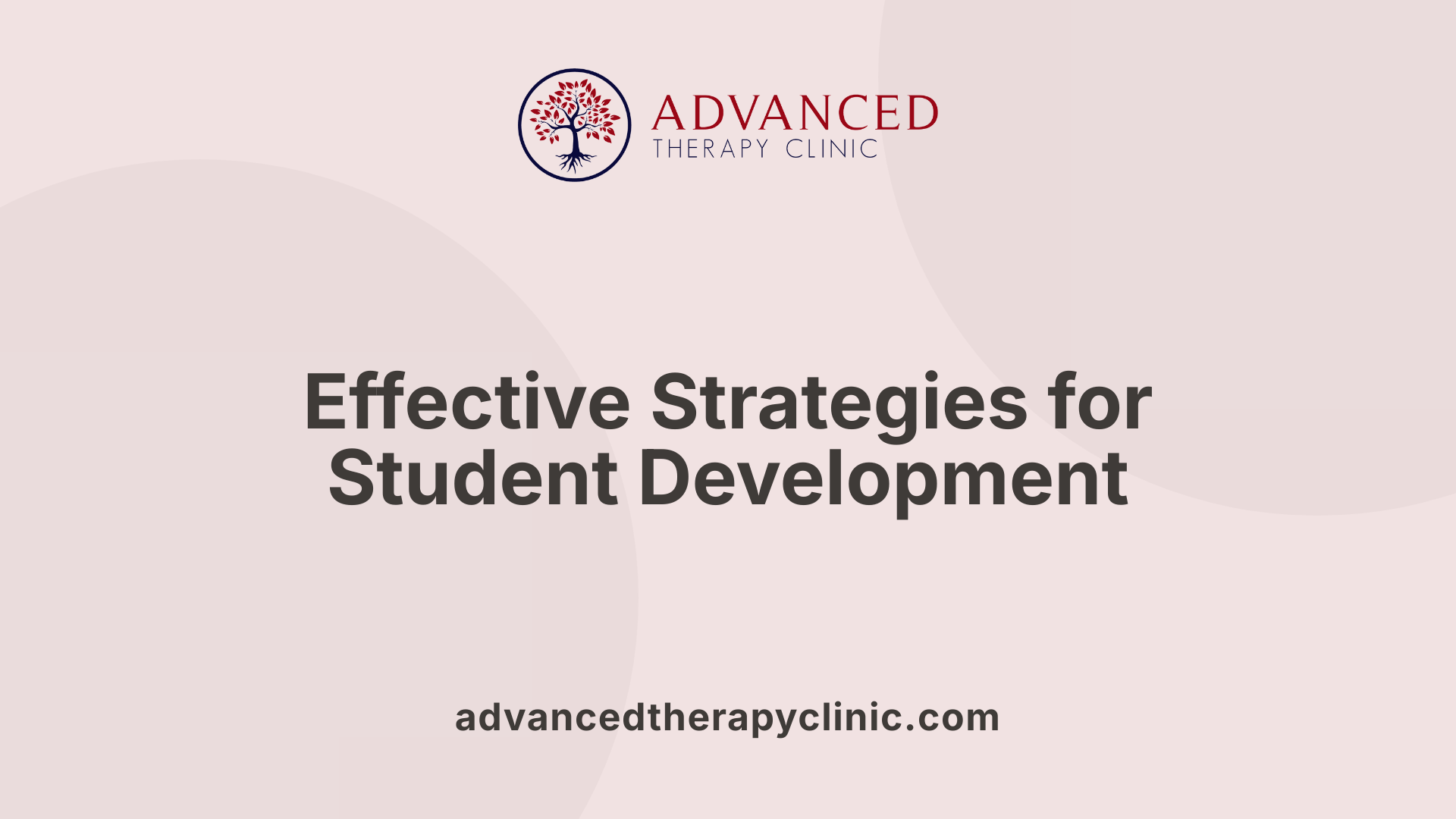How ABA Therapy Can Improve Classroom Behavior


Understanding the Impact of ABA in Education
Applied Behavior Analysis (ABA) has emerged as a powerful, evidence-based approach for improving classroom behavior, especially among students with autism, ADHD, and other neurodevelopmental challenges. By tailoring interventions to each child's unique needs, ABA promotes positive behavioral changes, enhances social and communication skills, and fosters a more inclusive, supportive learning environment. This article explores how ABA strategies can be integrated into classrooms to support student development, improve behavior, and improve overall educational outcomes.
Fundamentals of ABA in Educational Settings

How can ABA therapy improve classroom behavior?
ABA therapy can significantly improve classroom behavior by promoting positive actions and reducing disruptive or challenging behaviors through tailored interventions. It involves analyzing environmental factors and understanding individual student needs to develop effective strategies, such as reinforcement and task analysis, that encourage desirable behaviors. Establishing routines, visual supports, and clear expectations provides structure and predictability, helping students feel more confident and comply with classroom rules.
Additionally, ABA techniques help develop social skills and independence, enabling students to interact better with peers and teachers. Overall, ABA therapy fosters a supportive and structured learning environment, leading to improved student engagement, behavior, and academic success.
How effective is ABA therapy in classroom environments?
ABA therapy is highly effective in classroom environments for supporting children with autism spectrum disorder (ASD), leading to significant improvements in social, behavioral, and academic skills. It provides personalized, data-driven interventions that reduce problematic behaviors and promote positive behaviors, including communication and social interaction. Implemented by trained professionals, ABA strategies like positive reinforcement, prompting, and task analysis create a structured environment that encourages active engagement and independence.
Research consistently demonstrates that early and intensive ABA interventions can result in meaningful, clinically significant gains in adaptive functioning, especially for children with lower baseline skills. Overall, ABA therapy enhances learner readiness, social development, and academic performance, making it a valuable approach within educational settings.
What methods and strategies of ABA therapy are used in educational settings?
ABA therapy utilizes a variety of methods and strategies in educational settings to promote skill development and reduce problematic behaviors. Key techniques include discrete trial training (DTT), which breaks down skills into small steps and uses a cue-response-reward cycle, and naturalistic teaching approaches like incidental teaching, which leverage the child's interests and everyday routines.
Visual supports, such as social stories, picture schedules, and modeling, are employed to facilitate understanding and social interaction. Reinforcement systems, including positive reinforcement and token economies, motivate desired behaviors, while prompting and fading strategies support independence in skill acquisition.
Additionally, collaboration among therapists, teachers, and families, alongside individualized behavior intervention plans, ensures tailored and effective implementation of ABA strategies for each student.
Who benefits from ABA therapy and how?
ABA therapy provides numerous benefits to students, teachers, and parents by promoting improved behavior, communication, and social skills in students with autism, leading to better academic and social outcomes. It creates a structured and supportive learning environment through individualized interventions, data-driven strategies, and positive reinforcement, which enhance student engagement and independence.
Teachers trained in ABA techniques are better equipped to manage classroom behaviors, reducing stress and fostering effective instruction. The collaborative efforts among therapists, teachers, and parents ensure consistency and reinforcement of skills across settings, benefiting the child's overall development. Overall, ABA therapy supports inclusive education, helping students with diverse needs succeed academically, socially, and in everyday life.
What is the role of ABA in supporting student development and classroom management?
ABA therapy plays a vital role in supporting student development by promoting socially significant behaviors, communication, social skills, and independence through evidence-based strategies. It helps classroom management by reducing disruptive behaviors and increasing positive interactions using techniques such as reinforcement, visual supports, modeling, and prompting.
ABA’s individualized approaches, including functional behavior assessments and tailored intervention plans, enable teachers to address each student’s unique needs effectively. Implementing ABA strategies like token economies, behavior contracts, and social stories fosters a positive, structured learning environment, reducing stress and enhancing engagement.
Overall, ABA empowers teachers with practical tools to create supportive classrooms that encourage meaningful student growth and better behavior management.
How is ABA applied specifically for children with autism and ADHD in schools?
Applied Behavior Analysis (ABA) is widely used in schools to support children with autism and ADHD by implementing individualized, evidence-based strategies that promote skill development and behavior management. In classroom settings, ABA techniques such as visual schedules, prompts, and positive reinforcement are utilized to teach communication, social skills, organizational routines, and academic tasks.
Teachers often create personalized "About Me" sheets to understand each child's preferences, needs, and safety considerations, fostering a welcoming environment that encourages social interaction and acceptance. ABA interventions may include discrete trial training, naturalistic teaching, and peer-mediated approaches to facilitate generalization and functional skills, while addressing sensory and environmental factors like seating arrangements and sensory considerations.
Overall, ABA aims to enhance everyday functioning, reduce interfering behaviors, and promote independence within the school community, respecting the individual differences of each child.
What strategies does ABA employ to promote positive behavior and support classroom learning?
ABA employs multiple strategies to promote positive behavior and support classroom learning effectively. Central among these are positive reinforcement techniques, such as praise, tokens, or high fives, which reward desirable actions and encourage their repetition.
Visual supports like schedules, social stories, and nonverbal cues help clarify expectations and routines, making them accessible for all students. Prompting and fading are used to guide students through new skills while gradually promoting independence.
Token economy systems motivate students over time by exchanging symbols or tokens for preferred items or privileges. Contingent observation, a mild form of timeout, teaches children acceptable group behavior by reducing disruptive actions without negative connotations.
These strategies, tailored to each student's needs, create a structured, motivating, and predictable classroom environment conducive to learning.
What are some common ABA teaching strategies used in schools?
Common ABA teaching strategies employed in schools include discrete trial teaching (DTT), naturalistic teaching, pivotal response treatment, and peer-mediated interventions. DTT involves systematic skill acquisition through structured, repetitive trials with prompts and reinforcement, effective for teaching academic and social skills.
Naturalistic teaching leverages real-life routines and interests, making learning engaging and functional. Pivotal Response Treatment (PRT) targets motivation, social engagement, and self-management, resulting in broad developmental gains.
Peer-mediated interventions involve classmates in supporting social interactions and inclusive practices. Additional tools such as social stories, visual schedules, and modeling complement these strategies, all aimed at fostering communication, independence, and positive social behaviors in diverse classroom settings.
What are the long-term benefits of ABA therapy for children with neurodevelopmental challenges?
The long-term benefits of ABA therapy for children with neurodevelopmental challenges are substantial. Research indicates that intensive and early ABA interventions can lead to improvements in intellectual functioning, language skills, daily living skills, and social integration.
With consistent application, children can acquire adaptive behaviors that facilitate greater independence and successful transitions into further education, employment, and community participation. Moreover, ABA fosters skills that support executive functioning, such as organization, planning, and self-monitoring, which are crucial for lifelong learning.
Overall, the benefits extend beyond immediate behavior management, setting a foundation for sustained development and improved quality of life across various domains.
Implementing ABA in Classroom Environments

How is ABA applied for children with autism and ADHD in schools?
Applied Behavior Analysis (ABA) is a widely recognized, science-based approach used in educational settings to support children with autism and ADHD. It relies on creating personalized, evidence-supported strategies designed to promote skill development and manage behaviors that interfere with learning. In classrooms, ABA techniques such as visual schedules help children understand daily routines, while prompts guide them through tasks. Positive reinforcement—like praise, tokens, or preferred activities—encourages desirable behaviors to be repeated.
Teachers often prepare simple “About Me” sheets to gather information about each child's interests, triggers, and safety considerations, aiding in creating a welcoming and socially inclusive environment. Interventions may include discrete trial training, where skills are broken into small steps with clear cues and responses, naturalistic teaching methods that leverage children's natural interests, and peer-mediated strategies to promote social interaction.
To address sensory sensitivities and environmental factors, adjustments such as seating arrangements and sensory tools are incorporated. All these efforts help facilitate communication, social skills, independence, and academic participation, ultimately reducing behaviors that disrupt learning and fostering functional skills tailored to each child's needs.
What are the key components of implementing ABA in a classroom?
Implementing ABA effectively in a classroom hinges on several critical steps. Initially, educators conduct comprehensive assessments, particularly Functional Behavior Assessments (FBAs), to understand the purpose and triggers of specific behaviors. The data collected guides the development of individualized goals targeting areas like communication, social skills, independence, and daily routines.
Classroom modifications are integral to supporting implementation. Visual schedules, clearly defined routines, designated reinforcement areas, and organized materials help establish a predictable environment that encourages positive behaviors. Evidence-based strategies—including discrete trial training (DTT), which involves systematic teaching of skills; naturalistic teaching, which integrates learning into everyday activities; token economies leveraging tangible symbols for reinforcement; and social supports—are consistently applied.
Regular data collection and performance monitoring are essential to track progress and refine intervention strategies. Collaboration among teachers, ABA professionals, and families ensures consistency across settings, maintaining intervention fidelity. This collaborative and data-driven approach fosters meaningful skill acquisition and behavior improvement.
How do ABA interventions evolve over time to meet student needs?
ABA interventions are dynamic and adapt over time to meet the changing needs of learners through ongoing assessment and data analysis. Continuous monitoring allows educators and therapists to determine which skills are progressing and identify areas needing further support or adjustment.
As students master targeted skills, interventions are gradually intensified, faded, or replaced by more complex tasks to promote independence and transfer of skills to new environments. For example, initially, simple prompts might be used, but over time, prompts are faded as the student demonstrates mastery.
Adjustments may include modifying reinforcement schedules, increasing session complexity, or integrating new strategies to address emerging challenges. This flexibility ensures that ABA support remains relevant and effective, preventing stagnation and promoting sustained growth.
How can classroom modifications complement ABA strategies to enhance learning?
Classroom modifications are crucial in reinforcing ABA strategies and creating an environment that promotes positive behavioral and learning outcomes. Visual supports like schedules, timers, and social stories reduce anxiety and help children understand routines.
Quiet zones, sensory tools, and adjustable lighting facilitate self-regulation for students with sensory sensitivities. Arranging seating to minimize distractions and fostering peer-supported activities promote social inclusion.
These modifications serve to reinforce behavioral strategies such as prompting and reinforcement, making them more effective by providing consistent cues and environmental stability. When integrated with ABA interventions, classroom modifications help sustain desired behaviors, foster independence, and create inclusive learning environments suitable for children with diverse needs.
| Aspect | Description | Additional Details |
|---|---|---|
| Application Areas | Autism, ADHD, TBI, OCD, speech issues | Covers a wide range of neurodevelopmental and behavioral concerns |
| Techniques Used | Discrete trial training, naturalistic teaching, token economy, social supports, scripting | Tailors teaching to individual needs and contexts |
| Assessment Methods | Functional Behavior Assessment, data collection | Informs personalized intervention planning |
| Environment Supports | Visual schedules, sensory tools, seating arrangements | Enhances engagement and reduces stress |
| Monitoring & Adjustment | Ongoing data, progress reviews, task fading | Ensures continuous relevance and effectiveness |
| Classroom Modifications | Visual supports, sensory spaces, structured routines | Reinforces ABA strategies and promotes learning |
By combining detailed assessments, tailored interventions, and supportive classroom modifications, ABA provides a comprehensive framework that adapts to student progress and fosters meaningful learning experiences.
The Road Ahead for ABA in Education
As evidence underscores its effectiveness, ABA continues to redefine how educators and therapists approach supporting students with neurodevelopmental challenges. Its customizable, scientifically supported methods foster inclusive, engaging classroom experiences, empowering students to reach their full potential. Ongoing research and collaborative efforts among educators, clinicians, and families will ensure that ABA strategies evolve to meet future educational demands, ultimately leading to more adaptive, positive, and enriching learning environments for all students.
References
- How to Use ABA in the Classroom
- Using ABA Therapy in School Settings
- Applied Behavior Analysis (ABA)
- Effective ABA Strategies for Students with Autism
- Can ABA Be Used for ADHD or Classroom Behavior
- Improving Academic Performance with ABA Therapy in ...
- ABA Therapy and School: Support Not a Replacement
- Autism in the classroom: Strategies for success
Recent articles

Expressive Speech Delay 2-Year-Old
Understanding and Addressing Expressive Speech Delay in Toddlers

How Speech Recognition Works
Unlocking the Power of Speech Recognition in Therapy and Healthcare

Autism and Head Size
Understanding the Complex Relationship Between Autism and Head Size

Occupational Therapy in Autism
Enhancing Independence and Quality of Life Through Occupational Therapy in Autism

Do Autistic People Understand Sarcasm?
Navigating the Nuances: Understanding Sarcasm and Social Communication in Autism

Autism Routines
Crafting Effective Daily Structures for Children with Autism

